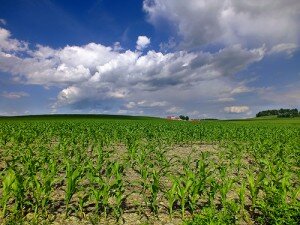 Just this week, donated $100,000 to help Nebraska students of all ages gain a better understanding of science and agriculture. FCSAmerica, which is based in Omaha, serves farmers and ranchers in Iowa, Nebraska, South Dakota, and Wyoming. They supply the nation’s agricultural industry with almost one-third of its credit needs, no small number.
Just this week, donated $100,000 to help Nebraska students of all ages gain a better understanding of science and agriculture. FCSAmerica, which is based in Omaha, serves farmers and ranchers in Iowa, Nebraska, South Dakota, and Wyoming. They supply the nation’s agricultural industry with almost one-third of its credit needs, no small number.
The impetus for the donation was to support the University of Nebraska’s science literacy initiative. According to the , this initiative is specifically to promote a STEM literate society and thus address challenges associated with food, fuel, water, and more. “The University of Nebraska has a vital role in promoting science literacy as an important means of supporting the country’s food and agricultural workforce now, and in the future, which makes this contribution and investment especially meaningful for us and all those we serve,” said Bob Campbell, FCSAmerica senior vice president.
The goal? To support efforts to integrate agriculture and natural resource education, often referred to as “ag literacy,” into curricula in Nebraska in a more effective way than we are currently doing. Why is it so important? Well, , a writer for the University of California , would even say that ag/food literacy is not just important, it’s urgent. In California, the economy is agriculturally based, much like it is here in Nebraska.
Hayden-Smith says that to keep the system “sustainable into the future, we need to provide education about how agriculture and the food system work, why, and how their sustainability is essential to each one of us . . . because we all eat. We are all stakeholders in this food system . . . Agriculture is not just something that’s part of our past, it’s vital to our future.”
You may have heard of the skills gap in manufacturing, but one of the issues that the FCSAmerica grant is working to correct is the “ag literacy gap.” In 2012, said that there is “a disconnect that people have about where their food comes from and the role of agriculture in their daily lives. More children are growing up with no connection to farming and ranching.” Ag literacy, then, isn’t just knowledge for the sake of knowledge.
Rather, an understanding of how important agriculture and science are to our economy can help generate support for it. In Nebraska, where agriculture is our number one industry and manufacturing is our second (and many manufacturers are closely tied to ag), this type of misunderstanding could be truly problematic.
That’s why last year, UNL used grant money from the U.S. Department of Agriculture to launch the National Agricultural Literacy Center in hopes of identifying new ways to teach K-12 students about agricultural science. This type of education doesn’t just mean teaching agriculture classes, either: It means teaching teachers how to view biology, chemistry, and other science classes through an agriculture or natural resources lens.
In Nebraska, so much of our economy revolves around the agricultural industry. Manufacturers manufacture parts and products for farms, businesses like the FCSAmerica depend on the success of agriculture, and much more. We’re delighted to see strides being taken toward greater agricultural literacy in our state, for this generation and for the next.
—
photo credit: via
 Official Nebraska Government Website
Official Nebraska Government Website
